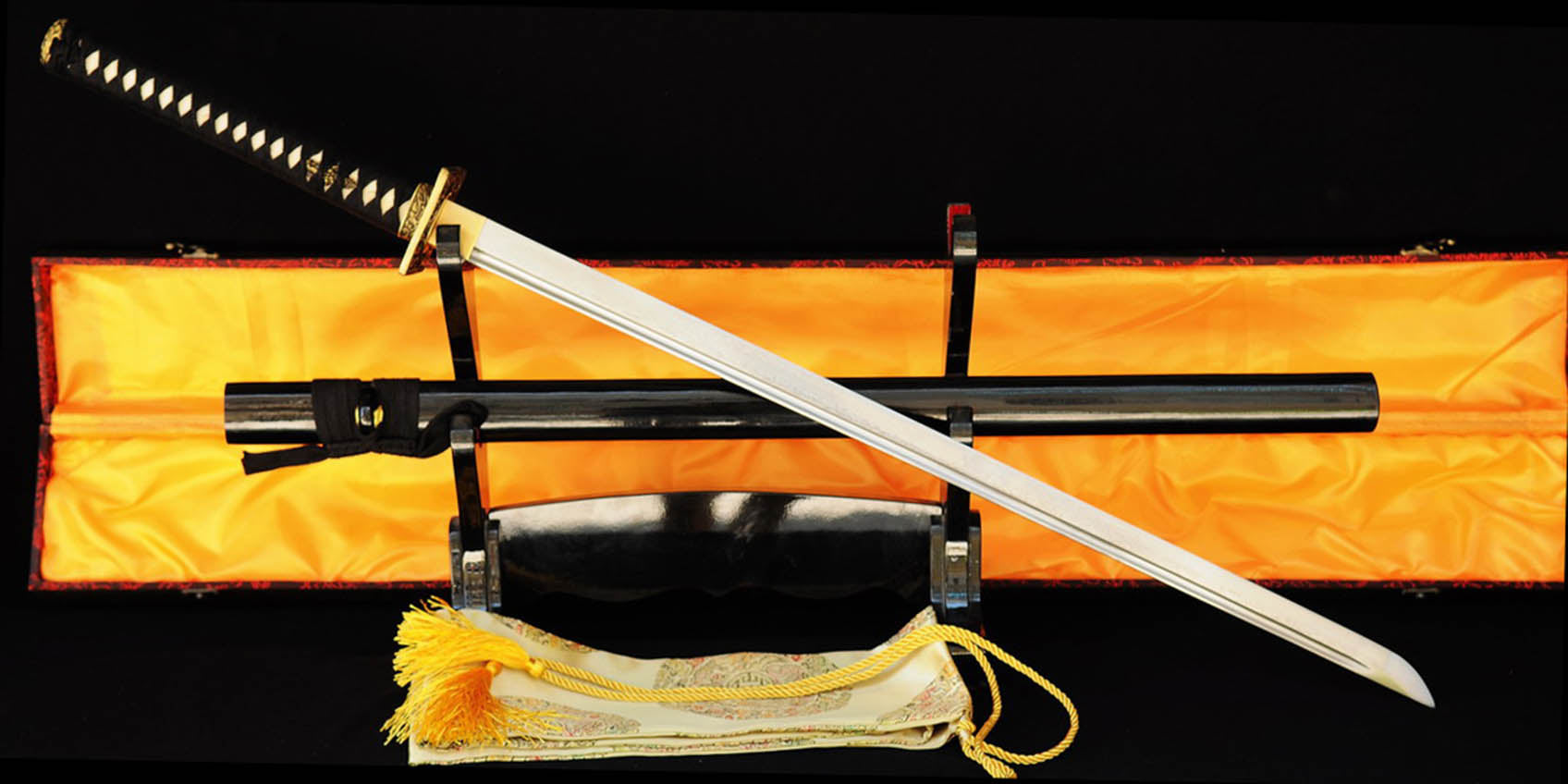Ninja Swords vs Samurai Swords: Exploring the Unique Appeal

Ninja Swords vs. Samurai Swords: Exploring the Unique Appeal of 'Ninja Sword' and 'Ninja Katana'
In the world of Japanese weaponry, few swords stand as iconic as the samurai sword (Katana) and the ninja sword. While both are steeped in Japan's history and cultural heritage, they differ significantly in design, usage, and symbolism. This article delves into the origins, characteristics, and roles of the ninja sword and ninja katana, shedding light on the fascinating distinctions between these legendary blades.
1. What is the Ninja Sword Called?
The ninja sword, also known as ninjato, was specifically designed for use by ninjas—the secretive operatives and spies in feudal Japan. Unlike the long, curved samurai katana, the ninja sword was crafted for stealth, efficiency, and portability. Ninja swords were typically shorter, straighter, and simpler in design, prioritizing ease of concealment and quick strikes.
Characteristics of the Ninja Sword:
- Shorter Blade: Ninja swords typically have blades between 40-60 cm, making them easy to carry and conceal.
- Simpler Design: The design of the ninja sword is minimalist, often with a straight blade and a handle that lacks decorative features, reducing the risk of making noise during use.
- Portability and Concealment: Ninja swords were designed to be hidden in clothing or specialized ninja equipment. They were often used alongside other tools, like shuriken or smoke bombs.
- Light and Agile: The ninja sword was lighter than the samurai katana, allowing for quicker movements and efficient close-range combat.
2. Ninja Sword vs. Samurai Katana: A Key Comparison
Though both the ninja sword and the samurai katana hold significant places in Japanese weapon history, they serve different purposes. The samurai katana symbolized the noble warrior class, while the ninja sword was built for stealth and subterfuge. Here’s a quick comparison:
1. User Base:
- Samurai Katana: Wielded primarily by samurai, it symbolized honor, duty, and social status. A katana was more than a weapon—it represented the identity and culture of the samurai class.
- Ninja Sword: Used by ninjas—agents of espionage and assassination. Ninja swords were designed for covert operations, assassination, and reconnaissance, focusing on agility and secrecy.
2. Design and Function:
- Samurai Katana: The katana features a long, curved blade, ideal for powerful slashing and cutting strikes. It balances functionality with aesthetics, with a significant emphasis on craftsmanship and beauty.
- Ninja Sword: Ninja swords, often straight-bladed, were built for stabbing and swift strikes. They were shorter and more practical, designed for agility rather than beauty.
3. Social Symbolism:
- Samurai Katana: The katana represented the nobility and code of the samurai. It carried immense cultural significance, symbolizing loyalty, courage, and dignity.
- Ninja Sword: While ninja swords were vital tools for secretive operations, they did not carry the same level of symbolic value. They were tools of espionage and stealth.
3. Ninja Katana: A Blend of Samurai and Ninja
The term ninja katana may sound contradictory at first. After all, how can a traditional katana be associated with the stealthy, secretive nature of ninjas? The ninja katana refers to a sword that combines the blade length and cutting power of a katana but with modifications to make it more suitable for the ninja’s covert missions. Often lighter and slightly shorter than traditional katanas, the ninja katana retains the samurai blade’s elegance and functionality but with an emphasis on stealth.
Characteristics of Ninja Katana:
- Longer Blade: The ninja katana’s blade typically measures around 70 cm—longer than a traditional ninja sword but shorter than a typical samurai katana. This balance offers better reach while maintaining stealth.
- Versatility: The ninja katana is designed for both slashing and stabbing. It’s built for close-quarters combat and stealth, adapting to various combat situations.
- Ideal for Covert Operations: With its longer blade and sharp edge, the ninja katana was ideal for quickly eliminating enemies or escaping through a sneak attack, without drawing much attention.
4. Cultural Background of Ninja and Samurai Swords
The ninja sword and samurai katana represent two distinct facets of Japan's feudal society. The katana is an emblem of the samurai, representing loyalty, honor, and the warrior code. In contrast, the ninja sword symbolizes cunning, secrecy, and the covert nature of the ninja. Despite their differences, both swords played critical roles in shaping Japan’s martial traditions and have become deeply entrenched in popular culture.
5. How to Choose the Right Sword?
For those interested in Japanese swords, choosing the right blade is crucial. Whether it's the ninja sword or samurai katana, the choice depends on your preference for combat style, historical interest, or martial arts training. If you seek a traditional weapon with deep cultural roots and elegance, the samurai katana might be ideal. However, if you’re drawn to the idea of stealth and agility in close-quarters combat, the ninja sword would be more fitting.
Collectors should focus on the craftsmanship, historical context, and cultural significance of the blade. Every sword tells a story, whether it's for battle, training, or as a cultural artifact.
COOLKATANA Hand Forged Japanese Ninja Sword (Ninjato Chokuto) – Straight Blade, Folded Steel, Square Brass Tsuba
This Hand Forged Japanese Ninja Sword (Ninjato Chokuto) is a top-quality blade designed for enthusiasts of Japanese weaponry and ninja culture. Crafted using traditional folded steel techniques, with a straight blade and square brass tsuba, this sword beautifully combines modern craftsmanship with historical authenticity. Perfect for display, martial arts training, or as a collector’s item, this ninja sword offers exceptional value and versatility.
Main Features:
- Hand Forged: Each sword is meticulously handcrafted by experienced artisans, ensuring the blade’s durability and sharpness.
- Folded Steel Blade: The use of folded steel enhances the blade’s strength and sharpness, ensuring a long-lasting, high-performance weapon.
- Straight Blade Design: Unlike the traditional katana, the straight blade design allows for more precise, rapid strikes, ideal for close-range combat.
- Square Brass Tsuba: The square brass tsuba not only provides hand protection but also gives the sword a distinctive, understated look, aligning with the practical and simple design of the ninja sword.
- Ideal for Collectors and Martial Artists: This sword is perfect for martial arts practitioners, collectors, and anyone with an interest in Japanese weapons and ninja history.
Why Choose This Ninja Sword?:
- Cultural Significance: As a symbol of the ninja’s stealth and agility, this sword embodies the essence of ninja lore and secretive operations.
- High-Quality Materials: Crafted from folded steel and brass, this sword offers both beauty and functionality, showcasing the pinnacle of Japanese craftsmanship.
- Blend of Functionality and Aesthetics: This sword is not only highly functional for training and combat but also a beautiful piece for display or collection.
- Excellent Value: As a hand-forged ninja sword, it offers great value for anyone interested in historical weapons or ninja culture.
Hand Forged Japanese Ninjato Chokuto Sword With Straight Blade, Folded Steel, Square, Brass Tsuba
Conclusion
Whether it's the ninja sword or ninja katana, both blades carry deep cultural roots and offer unique features. The ninja sword represents stealth, agility, and secrecy, while the samurai katana embodies honor, duty, and nobility. Though they come from different traditions, both are crucial to Japan’s martial legacy. For sword enthusiasts, understanding and collecting these iconic weapons provides an unparalleled journey into Japan’s rich history and culture.



